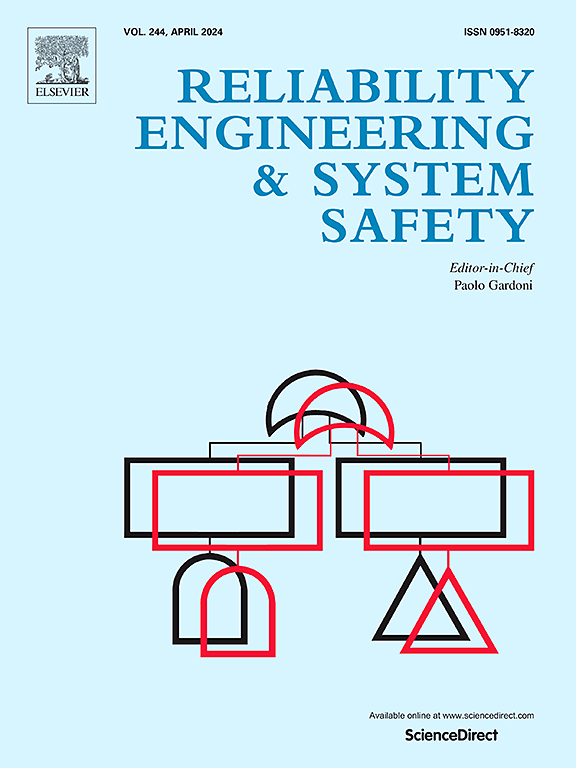量子故障树与最小割集辨识
IF 9.4
1区 工程技术
Q1 ENGINEERING, INDUSTRIAL
引用次数: 0
摘要
故障树是复杂工程系统可靠性和风险评估的重要工具。故障树分析的核心任务之一是最小割集的识别,最小割集被定义为呈现系统故障阻力最小路径的组件组。尽管如此,最小割集识别仍然是一个极具挑战性的问题,因为随着系统规模线性增加,可行配置呈指数增长。最近,量子计算被认为是解决日益复杂的计算挑战的一种有前途的工具。然而,将其集成到可靠性工程中,特别是与故障树建模相关的挑战,仍然没有得到充分的探索。为了填补这一空白,本文将量子计算集成到故障树模型中,以评估其最小割集识别的能力。为此,本文提出了一种将故障树编码为量子算法的新方法,并利用Grover算子进行最小割集的识别。为了验证目的,提出了一系列理论和数值结果,后者使用量子模拟器获得,其中所提出的算法与最先进的非量子方法进行了比较。本文章由计算机程序翻译,如有差异,请以英文原文为准。
Quantum Fault Trees and Minimal Cut Sets Identification
Fault Trees represent an essential tool in the reliability and risk assessment of complex engineering systems. One of the core tasks in Fault Tree analysis is the identification of Minimal Cut Sets, defined as groups of components that present the least path of resistance toward a system's failure. Nonetheless, minimal cut set identification remains a highly challenging problem due to the exponential growth in feasible configurations as the system size increases linearly. Recently, quantum computation has been heralded as a promising tool to tackle computational challenges of increased complexity. However, its integration into reliability engineering, and in particular to challenges related to Fault Tree modeling, is still underexplored. To fill this relevant gap, this paper integrates quantum computation into the Fault Tree Model to assess its capabilities for minimal cut set identification. To this end, this paper proposes a novel approach to encode a fault tree into a quantum algorithm and perform the identification of minimal cut sets via the application of the Grover operator. For validation purposes, a series of theoretical and numerical results, the latter obtained using a quantum simulator, are presented in which the proposed algorithm is compared against a state-of-the-art non-quantum approach.
求助全文
通过发布文献求助,成功后即可免费获取论文全文。
去求助
来源期刊

Reliability Engineering & System Safety
管理科学-工程:工业
CiteScore
15.20
自引率
39.50%
发文量
621
审稿时长
67 days
期刊介绍:
Elsevier publishes Reliability Engineering & System Safety in association with the European Safety and Reliability Association and the Safety Engineering and Risk Analysis Division. The international journal is devoted to developing and applying methods to enhance the safety and reliability of complex technological systems, like nuclear power plants, chemical plants, hazardous waste facilities, space systems, offshore and maritime systems, transportation systems, constructed infrastructure, and manufacturing plants. The journal normally publishes only articles that involve the analysis of substantive problems related to the reliability of complex systems or present techniques and/or theoretical results that have a discernable relationship to the solution of such problems. An important aim is to balance academic material and practical applications.
 求助内容:
求助内容: 应助结果提醒方式:
应助结果提醒方式:


